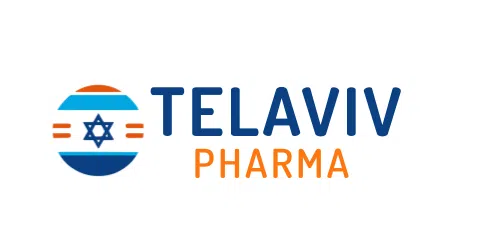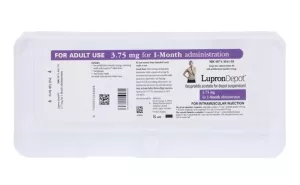
Atacand vs. Micardis: Which High Blood Pressure Treatment is Right for You?
Last Updated on November 7, 2025
Choosing the right blood pressure medication can feel overwhelming when your doctor presents multiple options. If you’re considering Atacand (candesartan) or Micardis (telmisartan), you’re looking at two highly effective medications from the same drug class—angiotensin II receptor blockers (ARBs). Both medications lower blood pressure effectively, but they have subtle differences that might make one more suitable for your specific health situation.
This comprehensive comparison helps you understand how Atacand and Micardis stack up against each other. We’ll examine their mechanisms of action, effectiveness rates, side effect profiles, dosing schedules, and which patients benefit most from each medication. By the end, you’ll have the information needed to have an informed conversation with your healthcare provider about which option best fits your health needs.
Quick Comparison: Atacand vs Micardis at a Glance
Contents
- Quick Comparison: Atacand vs Micardis at a Glance
- What Are Atacand and Micardis?
- How Do Atacand and Micardis Work?
- Effectiveness: Which One Lowers Blood Pressure Better?
- FDA-Approved Uses: Beyond Blood Pressure
- Dosing: How to Take Atacand vs Micardis
- Side Effects: Atacand vs Micardis Comparison
- Drug Interactions: What to Avoid
- Special Populations: Who Should Take Which Medication?
- Pros and Cons: Atacand vs Micardis
- When to Choose Atacand
- When to Choose Micardis
- Can You Switch Between Atacand and Micardis?
- Combining with Other Blood Pressure Medications
- Cost Considerations
- Monitoring While Taking Atacand or Micardis
- Lifestyle Changes That Enhance Medication Effectiveness
- Alternatives to Consider
- Frequently Asked Questions
- Can I take Atacand or Micardis with other medications?
- How long does it take for Atacand or Micardis to work?
- What happens if I miss a dose?
- Can I stop taking Atacand or Micardis if my blood pressure is normal?
- Will I need to take blood pressure medication forever?
- Are generic versions as good as brand names?
- Can I drink alcohol while taking these medications?
- What should I do if I experience side effects?
- The Bottom Line: Choosing Between Atacand and Micardis
Before diving into details, here’s a quick overview of how these two ARBs compare:
| Feature | Atacand (Candesartan) | Micardis (Telmisartan) |
|---|---|---|
| Drug Class | ARB (Angiotensin II Receptor Blocker) | ARB (Angiotensin II Receptor Blocker) |
| FDA Approval | 1998 | 1998 |
| Dosing Frequency | Once daily | Once daily |
| Typical Dosage Range | 8mg – 32mg daily | 40mg – 80mg daily |
| Duration of Action | 24 hours | 24+ hours |
| Can Be Taken With/Without Food | Yes | Yes |
| FDA-Approved Uses | Hypertension, Heart failure | Hypertension, Cardiovascular risk reduction |
| Generic Available | Yes (Candesartan) | Yes (Telmisartan) |
What Are Atacand and Micardis?
Both Atacand and Micardis belong to a class of medications called angiotensin II receptor blockers (ARBs). These drugs work by blocking the action of angiotensin II, a hormone that causes blood vessels to narrow. When blood vessels are relaxed and widened, blood flows more easily and blood pressure decreases. This reduces the workload on your heart and helps prevent complications like stroke, heart attack, and kidney problems.
Atacand (candesartan cilexetil) was developed by AstraZeneca and approved by the FDA in 1998. Its primarily prescribed for treating high blood pressure in adults and certain types of heart failure. Atacand is a prodrug, meaning your body converts it into its active form (candesartan) after you take it. This conversion process gives Atacand a strong and lasting effect on blood pressure control.
Micardis (telmisartan) was also approved in 1998 and is manufactured by Boehringer Ingelheim. Like Atacand, it treats high blood pressure, but it also has FDA approval for reducing cardiovascular risk in patients over 55 who are at high risk for heart attack or stroke but can’t take ACE inhibitors. Micardis has one of the longest half-lives among ARBs, meaning it stays active in your body longer than most similar medications.

How Do Atacand and Micardis Work?
Understanding how these medications work helps explain why they’re effective and why your doctor might choose one over the other.
The Renin-Angiotensin-Aldosterone System (RAAS)
Your body regulates blood pressure through a complex system called the RAAS. Here’s how it works:
- Your kidneys release an enzyme called renin
- Renin converts angiotensinogen (from your liver) into angiotensin I
- An enzyme called ACE converts angiotensin I into angiotensin II
- Angiotensin II causes blood vessels to constrict (narrow) and triggers aldosterone release
- This increases blood pressure and fluid retention
Both Atacand and Micardis block angiotensin II from binding to its receptors (specifically AT1 receptors) on blood vessel walls. Without angiotensin II doing its job, blood vessels stay relaxed, blood pressure stays lower, and your heart doesnt work as hard.
Key Differences in Mechanism
While both medications block the same receptors, they have slight differences:
Atacand’s mechanism: Candesartan binds very tightly to AT1 receptors and dissociates (lets go) very slowly. This creates a long-lasting effect even after the medication starts leaving your bloodstream. Think of it like a strong magnet that sticks to metal—it takes time to pull away.
Micardis’s mechanism: Telmisartan has the longest half-life of any ARB (24 hours), meaning it stays in your system longer. It also has additional effects beyond blocking angiotensin II—it activates PPAR-gamma receptors, which may provide extra cardiovascular protection and improve insulin sensitivity. This makes Micardis particularly interesting for patients with diabetes or metabolic syndrome.
Effectiveness: Which One Lowers Blood Pressure Better?
Both Atacand and Micardis are highly effective at lowering blood pressure. Multiple clinical trials have compared these medications head-to-head, and the results show they’re remarkably similar in effectiveness.
Blood Pressure Reduction
Studies show that both medications typically lower blood pressure by:
- Systolic blood pressure (top number): 10-15 mmHg reduction
- Diastolic blood pressure (bottom number): 5-10 mmHg reduction
These reductions occur within 2-4 weeks of starting treatment, with maximum effects usually seen by 4-6 weeks. The effectiveness depends on your starting blood pressure and the dose prescribed.
Comparative Studies
A 2010 study published in the Journal of Clinical Hypertension directly compared candesartan and telmisartan at equivalent doses. The researchers found no significant difference in blood pressure reduction between the two medications. Both reduced blood pressure effectively, and both were well-tolerated.
Another analysis looked at how well patients responded to different ARBs. The response rate (percentage of patients who achieved target blood pressure) was similar for Atacand and Micardis—approximately 50-60% of patients reached their blood pressure goals on either medication alone.
24-Hour Blood Pressure Control
One important measure of blood pressure medication effectiveness is how well it controls blood pressure throughout the entire day and night. Both Atacand and Micardis provide 24-hour blood pressure control with once-daily dosing.
Micardis may have a slight edge here due to its longer half-life. Studies using 24-hour ambulatory blood pressure monitoring show that Micardis maintains more consistent blood pressure control during the last few hours before the next dose, particularly in the early morning hours when blood pressure naturally rises and heart attack risk is highest.
FDA-Approved Uses: Beyond Blood Pressure
While both medications primarily treat high blood pressure, they have different FDA-approved uses that might influence your doctors choice.
Atacand’s FDA-Approved Uses
1. Hypertension (High Blood Pressure): Approved for adults and children 1 year and older. Atacand can be used alone or combined with other blood pressure medications like diuretics.
2. Heart Failure: Atacand is FDA-approved for treating heart failure (NYHA class II-IV) to reduce the risk of death from cardiovascular causes and reduce hospitalizations for heart failure. This approval came from the CHARM trials, which showed Atacand reduced heart failure hospitalizations by 23% and cardiovascular deaths by 12%.
Micardis’s FDA-Approved Uses
1. Hypertension (High Blood Pressure): Approved for adults. Like Atacand, it can be used alone or with other blood pressure medications.
2. Cardiovascular Risk Reduction: Micardis is approved to reduce the risk of heart attack, stroke, or death from cardiovascular causes in patients 55 years or older who are at high risk for major cardiovascular events and cannot tolerate ACE inhibitors. This approval came from the ONTARGET trial, which showed Micardis was as effective as the ACE inhibitor ramipril for preventing cardiovascular events.
Key difference: If you have diagnosed heart failure, Atacand has specific FDA approval for this condition. If you’re at high cardiovascular risk but don’t have heart failure yet, Micardis has approval for preventing cardiovascular events. For straightforward high blood pressure without these complicating factors, both work equally well.
Dosing: How to Take Atacand vs Micardis
Atacand Dosing
For hypertension:
- Starting dose: Usually 16mg once daily
- Maintenance dose: 8mg to 32mg once daily
- Maximum dose: 32mg daily
- Dose adjustments: Increase every 2-4 weeks based on blood pressure response
For heart failure:
- Starting dose: 4mg once daily
- Target dose: 32mg once daily
- Titration: Double the dose every 2 weeks as tolerated
Atacand can be taken with or without food. If you have kidney problems or are taking a diuretic, your doctor may start you on a lower dose (4-8mg) to avoid blood pressure dropping too low.
Micardis Dosing
For hypertension:
- Starting dose: Usually 40mg once daily
- Maintenance dose: 40mg to 80mg once daily
- Maximum dose: 80mg daily
- Dose adjustments: Increase after 2-4 weeks if blood pressure not controlled
For cardiovascular risk reduction:
- Dose: 80mg once daily
Micardis can be taken with or without food. Some patients may see adequate blood pressure control at 20mg daily, while others need the full 80mg dose.
Missed Dose Guidance
For both medications: If you miss a dose, take it as soon as you remember—unless its almost time for your next dose. In that case, skip the missed dose and continue with your regular schedule. Don’t take two doses at once to make up for a missed dose.
Side Effects: Atacand vs Micardis Comparison
Both Atacand and Micardis are generally well-tolerated, with most patients experiencing few or no side effects. The side effect profiles are very similar since they work through the same mechanism.
Common Side Effects (Affect 1-10% of Patients)
| Side Effect | Atacand | Micardis |
|---|---|---|
| Dizziness/Lightheadedness | 4-5% | 3-4% |
| Headache | 2-4% | 1-2% |
| Fatigue | 2-3% | 1-2% |
| Upper Respiratory Infection | 3-6% | 4-7% |
| Back Pain | 3-4% | 2-3% |
| Diarrhea | 2% | 3-4% |
| Nausea | 1-2% | 1% |
The most common side effect for both medications is dizziness, especially when first starting treatment or after a dose increase. This usually improves as your body adjusts to the medication. To minimize dizziness, stand up slowly from sitting or lying positions, especially in the first few weeks of treatment.
Serious Side Effects (Rare but Important)
Both Atacand and Micardis carry similar risks for serious side effects:
Angioedema (swelling of face, lips, throat): This is rare (less than 1% of patients) but potentially life-threatening. Stop the medication immediately and seek emergency care if you develop swelling of your face, lips, tongue, or throat, or difficulty breathing.
Kidney problems: ARBs can affect kidney function, particularly in patients with existing kidney disease or those taking other medications affecting the kidneys. Your doctor will monitor your kidney function with blood tests, especially when starting treatment.
High potassium (hyperkalemia): ARBs can raise potassium levels in your blood. This is usually not a problem for healthy patients but requires monitoring if you have kidney disease, diabetes, or take potassium supplements or potassium-sparing diuretics.
Low blood pressure (hypotension): If your blood pressure drops too low, you may feel dizzy, lightheaded, or faint. This is more common in patients taking diuretics, those who are dehydrated, or those with heart failure.
Fetal toxicity: Both medications can cause serious harm or death to an unborn baby if taken during pregnancy, especially during the second and third trimesters. If you become pregnant while taking either medication, stop it immediately and contact your doctor.
Advantages: Lower Cough Risk
One major advantage of both Atacand and Micardis compared to ACE inhibitors (like lisinopril or enalapril) is that they rarely cause persistent dry cough. ACE inhibitors cause bothersome cough in 10-20% of patients, often forcing them to switch medications. ARBs like Atacand and Micardis cause cough in less than 2% of patients, making them excellent alternatives if you couldn’t tolerate ACE inhibitors due to cough.
Drug Interactions: What to Avoid
Both Atacand and Micardis have similar drug interactions since they work through the same mechanism.
Medications That Increase Risk of Side Effects
NSAIDs (ibuprofen, naproxen, etc.): Non-steroidal anti-inflammatory drugs can reduce the blood pressure-lowering effects of ARBs and increase the risk of kidney problems. If you need pain relief, acetaminophen (Tylenol) is usually safer with ARBs.
Potassium supplements or potassium-sparing diuretics: These can increase potassium levels too much when combined with ARBs. Medications include spironolactone, amiloride, triamterene, and potassium chloride supplements.
Lithium: ARBs can increase lithium levels in the blood, potentially causing lithium toxicity. If you take lithium for bipolar disorder, you’ll need careful monitoring.
Other blood pressure medications: Combining ARBs with ACE inhibitors or direct renin inhibitors (like aliskiren) increases the risk of low blood pressure, kidney problems, and high potassium without providing additional benefit. Your doctor typically won’t prescribe these combinations.
Medications That May Reduce Effectiveness
Rifampin: This antibiotic can reduce Micardis levels in the blood, potentially making it less effective. Atacand is less affected by rifampin.
Food and Supplement Interactions
Salt substitutes: Many salt substitutes contain potassium chloride instead of sodium chloride. Using these products while taking ARBs can increase potassium levels too much.
Alcohol: Drinking alcohol while taking blood pressure medication can cause blood pressure to drop too low and increase dizziness. Moderate your alcohol intake.
Special Populations: Who Should Take Which Medication?
Patients with Heart Failure
Best choice: Atacand
If you have been diagnosed with heart failure, Atacand has FDA approval specifically for this condition based on strong clinical trial evidence. The CHARM trials showed that Atacand reduces heart failure hospitalizations and cardiovascular deaths. While Micardis may also help heart failure patients, Atacand has more robust evidence for this specific use.
Patients at High Cardiovascular Risk
Best choice: Micardis
If you’re 55 or older and at high risk for heart attack or stroke (due to factors like diabetes, previous cardiovascular disease, or multiple risk factors), Micardis has FDA approval for reducing cardiovascular risk. The ONTARGET trial showed Micardis was as effective as ACE inhibitors for preventing heart attacks, strokes, and cardiovascular deaths.
Patients with Diabetes
Slight advantage: Micardis
Both medications are excellent choices for patients with diabetes and high blood pressure. However, Micardis has additional effects on PPAR-gamma receptors that may improve insulin sensitivity and glucose metabolism. Some studies suggest Micardis may slightly reduce the risk of developing new-onset diabetes compared to other blood pressure medications. However, both Atacand and Micardis protect kidney function in diabetic patients equally well.
Patients with Kidney Disease
Either medication works well
Both Atacand and Micardis protect kidney function in patients with diabetic kidney disease or other chronic kidney conditions. They reduce protein in the urine (proteinuria) and slow the progression of kidney disease. Your doctor will monitor your kidney function closely when starting either medication. If you have severe kidney disease, you may need lower doses.
Elderly Patients
Either medication works well
Both medications are safe and effective in elderly patients. Older adults may be more sensitive to blood pressure-lowering effects, so doctors often start with lower doses and increase gradually. The long duration of action for both medications (24 hours) makes once-daily dosing convenient for elderly patients who may take multiple medications.
Patients Who Couldn’t Tolerate ACE Inhibitors
Either medication is an excellent alternative
If you had to stop taking an ACE inhibitor due to persistent dry cough, both Atacand and Micardis are great alternatives. They provide similar cardiovascular protection without causing cough. If you had angioedema (swelling) from an ACE inhibitor, use ARBs with caution and only under close medical supervision, as there’s a small risk of cross-reactivity.
Pros and Cons: Atacand vs Micardis
Atacand Advantages
- FDA-approved for heart failure: Strong clinical evidence for reducing hospitalizations and deaths in heart failure patients
- Tight receptor binding: Binds strongly to AT1 receptors, providing long-lasting effects
- Pediatric approval: Can be used in children as young as 1 year for high blood pressure
- Well-studied: Extensive clinical trial data over 25+ years of use
- Flexible dosing: Wide dosage range (4-32mg) allows for fine-tuning
- Low side effect rate: Generally very well-tolerated
Atacand Disadvantages
- Requires conversion: As a prodrug, it needs to be converted to its active form in the body
- Not approved for cardiovascular risk reduction: Lacks FDA approval for primary prevention of heart attack/stroke
- Less data on metabolic effects: Fewer studies on effects on glucose and lipid metabolism
Micardis Advantages
- Longest half-life: 24-hour half-life provides the most consistent blood pressure control
- FDA-approved for cardiovascular protection: Reduces risk of heart attack and stroke in high-risk patients
- PPAR-gamma activation: Additional metabolic benefits may help with insulin sensitivity
- Active drug: Not a prodrug, so works immediately without requiring conversion
- May reduce diabetes risk: Some evidence of reducing new-onset diabetes
- Excellent tolerability: Very low side effect rate
Micardis Disadvantages
- Not FDA-approved for heart failure: Less clinical evidence specifically for heart failure treatment
- Not approved for children: Only approved for adult use
- Interaction with rifampin: Blood levels reduced by rifampin antibiotic
When to Choose Atacand
Consider Atacand if you:
- Have been diagnosed with heart failure and need medication to reduce hospitalizations and improve survival
- Need blood pressure treatment for a child (1 year or older)
- Prefer a medication with extensive heart failure data
- Want a medication with a wide dosing range for fine-tuning
- Have tried other ARBs and they didnt work well
- Need to combine with other cardiovascular medications
When to Choose Micardis
Consider Micardis if you:
- Are 55 or older and at high risk for heart attack or stroke
- Have diabetes and need blood pressure control with potential metabolic benefits
- Want the ARB with the longest duration of action
- Previously took an ACE inhibitor for cardiovascular protection but developed a cough
- Have metabolic syndrome or prediabetes
- Need the most consistent 24-hour blood pressure control
Can You Switch Between Atacand and Micardis?
Yes, you can switch between these medications if one isn’t working well for you or if your health situation changes. However, always do this under your doctors supervision—never switch on your own.
How switching typically works:
- Your doctor will consider equivalent doses based on effectiveness studies
- You’ll stop one medication and start the other (usually the next day)
- Your doctor will monitor your blood pressure closely for the first few weeks
- Dose adjustments may be needed based on your response
Common reasons for switching:
- Blood pressure not adequately controlled on current medication
- Side effects with current medication
- New diagnosis (like heart failure) that makes one medication more appropriate
- Cost or insurance coverage changes
- Doctor prefers different medication based on new research
Combining with Other Blood Pressure Medications
Many patients need more than one medication to control blood pressure effectively. Both Atacand and Micardis combine well with:
Diuretics (water pills): The most common combination. Hydrochlorothiazide or chlorthalidone work synergistically with ARBs to lower blood pressure. In fact, combination pills exist: Atacand HCT (candesartan + hydrochlorothiazide) and Micardis HCT (telmisartan + hydrochlorothiazide).
Calcium channel blockers: Medications like amlodipine or diltiazem work through a different mechanism and combine well with ARBs. This is often the second medication added if blood pressure isn’t controlled on an ARB alone.
Beta-blockers: Medications like metoprolol or carvedilol can be combined with ARBs, particularly in patients with heart failure or previous heart attack.
What NOT to combine with: Don’t combine ARBs with ACE inhibitors or direct renin inhibitors (aliskiren). These combinations increase side effects without providing additional benefits and are not recommended.
Cost Considerations
Both Atacand and Micardis are available as generics (candesartan and telmisartan), which significantly reduces cost compared to brand-name versions. Generic versions are bioequivalent to brand names, meaning they work exactly the same way in your body.
When ordering through online pharmacy services, you can access these medications at substantially lower prices than typical US retail pharmacies. Both medications are available through legitimate international pharmacies that source from countries with government price controls, making treatment more affordable without compromising quality or safety.
For many patients, cost becomes a factor in choosing blood pressure medication. Since both Atacand and Micardis work similarly for straightforward high blood pressure, choosing the more affordable option makes sense—as long as you don’t have specific conditions (like heart failure) that make one clearly superior.
Monitoring While Taking Atacand or Micardis
Regardless of which medication your doctor prescribes, you’ll need regular monitoring to ensure its working properly and not causing problems.
Blood Pressure Checks
Monitor your blood pressure regularly at home using a validated home blood pressure monitor. Keep a log of your readings to share with your doctor. Target blood pressure is typically below 130/80 mmHg for most patients, though your doctor may set a different target based on your age and other conditions.
Blood Tests
Your doctor will order blood tests to check:
- Kidney function (creatinine and BUN): Checked before starting medication, 2-4 weeks after starting, and then every 6-12 months
- Potassium level: Checked on the same schedule as kidney function tests
- Electrolytes: To ensure your body’s mineral balance stays normal
Follow-up Appointments
Expect to see your doctor:
- 2-4 weeks after starting medication to check blood pressure response and review any side effects
- Every 2-4 weeks if dose adjustments are needed
- Every 3-6 months once blood pressure is stable
Lifestyle Changes That Enhance Medication Effectiveness
Blood pressure medications work best when combined with healthy lifestyle habits. Whether you take Atacand, Micardis, or any other blood pressure medication, these changes amplify your treatment results:
Reduce sodium intake: Limit sodium to less than 2,300 mg daily (ideally 1,500 mg). Read food labels carefully and avoid processed foods, which are typically high in sodium.
Maintain healthy weight: Losing even 5-10 pounds can significantly lower blood pressure. Every 2 pounds lost typically lowers blood pressure by about 1 mmHg.
Exercise regularly: Aim for 150 minutes of moderate exercise weekly (like brisk walking) or 75 minutes of vigorous exercise. Regular physical activity can lower blood pressure by 5-8 mmHg.
Limit alcohol: Men should have no more than 2 drinks daily, women no more than 1 drink daily. Excessive alcohol raises blood pressure.
Quit smoking: Smoking temporarily raises blood pressure and damages blood vessels, making blood pressure medications less effective.
Manage stress: Chronic stress contributes to high blood pressure. Practice stress-reduction techniques like meditation, yoga, deep breathing, or whatever helps you relax.
Eat potassium-rich foods: Potassium helps balance sodium’s effects. Good sources include bananas, oranges, potatoes, beans, and leafy greens. However, if you have kidney disease, check with your doctor first, as too much potassium can be dangerous.
Alternatives to Consider
While Atacand and Micardis are excellent blood pressure medications, they’re not the only options. If neither medication works well for you, alternatives include:
Other ARBs
- Losartan: The first ARB approved by the FDA, with the most generic competition and lowest cost
- Valsartan (Diovan): Good for heart failure and post-heart attack treatment
- Olmesartan: Very potent ARB but carries a small risk of intestinal problems
- Azilsartan: The newest ARB with slightly more blood pressure-lowering effect
- Irbesartan: Good for diabetic kidney disease
ACE Inhibitors
If you haven’t tried ACE inhibitors yet, they’re often first-line alternatives to ARBs. Popular options include lisinopril, enalapril, and ramipril. They work similarly to ARBs but block a different point in the RAAS system. The main downside is persistent dry cough in 10-20% of patients.
Calcium Channel Blockers
Medications like amlodipine or diltiazem work through a completely different mechanism—they relax blood vessels by blocking calcium channels. They’re often used in combination with ARBs but can also be used alone.
Diuretics
Water pills like hydrochlorothiazide or chlorthalidone are often first-line treatments for high blood pressure, especially in African American patients who may not respond as well to ARBs or ACE inhibitors.
Beta-Blockers
Medications like metoprolol or carvedilol slow the heart rate and reduce the heart’s workload. They’re particularly useful if you have heart failure, previous heart attack, or certain heart rhythm problems in addition to high blood pressure.
Frequently Asked Questions
Can I take Atacand or Micardis with other medications?
Yes, both medications can be combined with most other drugs. However, avoid combining with potassium supplements, potassium-sparing diuretics, other ARBs, or ACE inhibitors without your doctors approval. Always tell your doctor and pharmacist about all medications, supplements, and herbal products you take.
How long does it take for Atacand or Micardis to work?
You’ll typically see blood pressure start to decrease within 2-4 hours of the first dose, but maximum blood pressure-lowering effects take 2-4 weeks. For heart failure or cardiovascular protection, benefits accumulate over months to years of consistent use.
What happens if I miss a dose?
Take it as soon as you remember, unless its almost time for your next dose. In that case, skip the missed dose and continue with your regular schedule. Don’t double up doses. Because both medications last 24 hours, missing one dose occasionally isn’t usually a problem, but try to take your medication consistently every day.
Can I stop taking Atacand or Micardis if my blood pressure is normal?
No. Your blood pressure is normal because the medication is working. Stopping the medication will cause your blood pressure to rise again, usually within days to weeks. High blood pressure is typically a lifelong condition that requires ongoing treatment. Never stop blood pressure medication without consulting your doctor first.
Will I need to take blood pressure medication forever?
Most people with high blood pressure need lifelong treatment. However, if you make significant lifestyle changes (major weight loss, significant sodium reduction, regular exercise), you might be able to reduce your dose or even discontinue medication under close medical supervision. Discuss this possibility with your doctor—don’t make changes on your own.
Are generic versions as good as brand names?
Yes. Generic candesartan and telmisartan are bioequivalent to brand-name Atacand and Micardis, meaning they work identically in your body. The FDA requires generic medications to meet the same strict quality and effectiveness standards as brand-name drugs. Generic versions offer substantial cost savings without sacrificing quality.
Can I drink alcohol while taking these medications?
Moderate alcohol consumption is generally safe, but excessive drinking can lower blood pressure too much, causing dizziness or fainting. Alcohol also raises blood pressure over time, making your medication less effective. Limit alcohol to no more than 1-2 drinks daily and discuss your specific situation with your doctor.
What should I do if I experience side effects?
Contact your doctor if you experience concerning side effects. Don’t stop the medication on your own, as this can cause blood pressure to spike dangerously. Your doctor can adjust your dose, try the other medication, or prescribe a different class of blood pressure medication. Most side effects are mild and improve with time.
The Bottom Line: Choosing Between Atacand and Micardis
Both Atacand and Micardis are excellent blood pressure medications with proven effectiveness and good safety profiles. For most patients with straightforward high blood pressure, either medication works equally well. The choice often comes down to:
- Specific health conditions: Heart failure patients may prefer Atacand; high cardiovascular risk patients may prefer Micardis
- Individual response: Some patients respond better to one medication than the other
- Side effect profile: If you experience side effects with one, try the other
- Cost and availability: Both are available as generics through affordable online pharmacy services
- Doctor’s preference: Based on their experience and your specific situation
The most important thing isn’t which ARB you take—its that you take your blood pressure medication consistently as prescribed. High blood pressure is called the “silent killer” because it usually has no symptoms but causes serious damage over time. Controlling your blood pressure dramatically reduces your risk of heart attack, stroke, kidney failure, and other complications.
Work with your healthcare provider to find the right medication and dose for you. Whether that’s Atacand, Micardis, or another option, staying committed to treatment protects your health for years to come. And remember, accessing these medications affordably through legitimate international pharmacies makes long-term treatment more sustainable for many patients.
Disclaimer: This article is for informational purposes only and should not replace medical advice from your healthcare provider. Always consult your doctor before starting, stopping, or changing medications. Individual results may vary. Only your healthcare provider can determine which medication is right for your specific situation.









Add comment